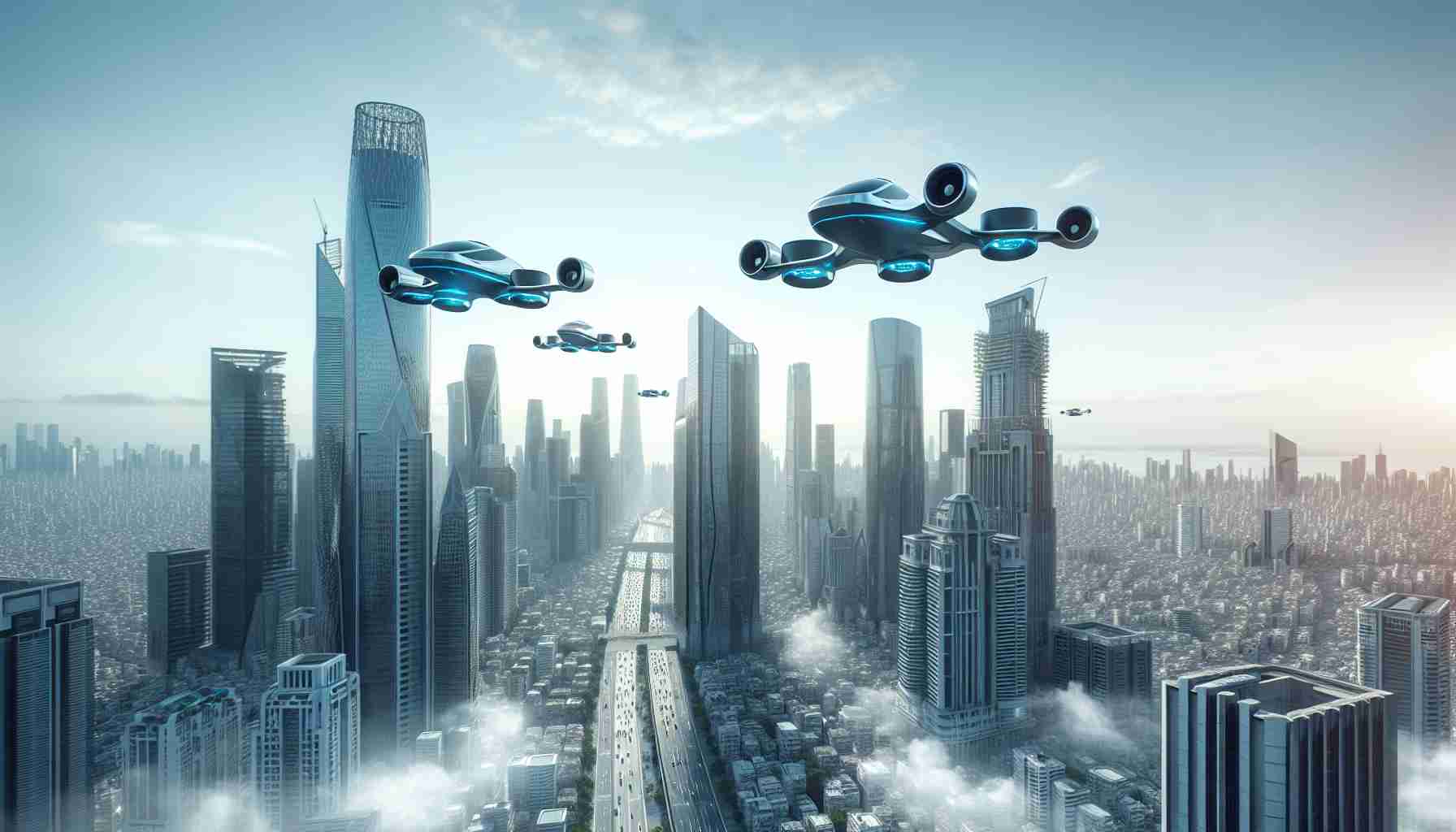A New Era for Transportation
In a groundbreaking announcement, XPeng, a prominent Chinese automobile manufacturer, showcased its latest innovation, the Aero HT Land Aircraft Carrier. This ambitious project, unveiled at major exhibitions like the China International Aviation and Aerospace Exhibition and CES 2025, aims to revolutionize personal transport by merging traditional vehicles with aerial capabilities.
Meet the Aero HT Land Aircraft Carrier
This remarkable vehicle features a sophisticated design that combines a robust SUV body with an agile quadcopter capable of vertical takeoff. The quadcopter promises flight durations exceeding thirty minutes, opening new horizons for urban mobility. Priced at approximately ₹1.96 crore (220,000 euros), this futuristic transport solution is expected to debut in 2026, focusing on the Chinese market initially.
Challenges Ahead
Despite the enthusiasm surrounding the Aero HT, several obstacles may impede its success. The anticipated regulations for flying vehicles, including necessary licenses and urban flying restrictions, could complicate adoption. Additionally, safety concerns comparable to those of aviation standards may need to be met before it can take to the skies.
XPeng’s backing by industry giants like Volkswagen adds credibility, positioning the company as a formidable contender in the evolving mobility landscape. As interest in flying cars intensifies, the Aero HT could represent a pivotal moment in the journey towards aerial transportation, should it navigate the complex regulatory environment effectively.
A New Era for Transportation
In recent years, the aviation and automotive industries have converged, signaling a transformative shift in transportation. The introduction of XPeng’s Aero HT Land Aircraft Carrier marks a significant milestone in this evolution, offering an innovative blend of aerial and terrestrial mobility. While this cutting-edge vehicle promises to redefine personal transport, the implications of such technology reach far beyond convenience—they have the potential to reshape environmental standards, economic frameworks, and societal behaviors.
Environmental Impact and Sustainability
The emergence of flying cars like the Aero HT could significantly impact the environment, for better or for worse. On one hand, aerial vehicles may alleviate congestion on urban roadways, potentially reducing emissions from idling vehicles. This could contribute to improved air quality in densely populated cities, which have long struggled with pollution. Furthermore, if XPeng and similar companies commit to electric powertrains, the reduction of fossil fuel dependency could minimize the transportation sector’s carbon footprint.
However, the promise of individual flying vehicles also raises concerns regarding air traffic management and noise pollution. With more airborne vehicles, urban areas might face challenges in maintaining safe altitude zones and minimizing disruption to wildlife and humans alike. The proliferation of these vehicles necessitates robust regulatory frameworks to ensure that environmental standards keep pace with innovation.
Humanity and Transport Equity
As XPeng’s Aero HT gains traction, it invites reflections on the nature of transportation equity. If flying vehicles become a common mode of transport, issues surrounding access and affordability will be paramount. With a price tag of approximately ₹1.96 crore (220,000 euros), the Aero HT may initially cater to a wealthy demographic, deepening existing disparities in mobility.
For humanity to benefit from this technological advancement, it will be essential to establish policies that promote inclusive access to aerial transportation. This means designing affordable alternatives or utilizing flying technology for public-sharing models that could serve broader communities, particularly in underserved areas.
Economic Prospects
The integration of aerial vehicles into the transportation ecosystem presents new economic opportunities. XPeng’s involvement, alongside giants like Volkswagen, could spur growth in related sectors—ranging from aviation to urban planning. Innovations in infrastructure to accommodate flying vehicles could boost jobs and drive economic development in various regions.
Moreover, as demand for innovative transportation solutions grows, a new market could emerge centered around maintenance, training, and regulatory compliance for personal flying vehicles. The ascendance of this market highlights the necessity for forward-thinking economic policies that can adapt to evolving technologies and capitalize on emerging industries.
A Vision for the Future
Ultimately, the introduction of the Aero HT Land Aircraft Carrier encapsulates a potential pivot towards a future where personal transport is not just about getting from point A to point B, but rather about rethinking our relationship with mobility. As we anticipate the commercial launch of such vehicles in 2026, it is crucial to consider how they fit into the larger narrative of sustainable and equitable transport.
The next decade offers a unique window to explore the intersection of technology, environment, economy, and humanity. If we embrace these changes responsibly, flying vehicles like the Aero HT can bridge distances both geographically and socially, creating a world where transportation enhances quality of life while safeguarding our planet. As we step into this new era for transportation, we must remain mindful of the balance required to make progress beneficial for all.
XPeng’s Aero HT: The Future of Personal Transport Unveiled
A New Era for Transportation
XPeng, a leading Chinese automobile manufacturer, recently unveiled an ambitious vehicle that promises to reshape personal transportation: the Aero HT Land Aircraft Carrier. This innovative creation merges traditional automotive design with advanced aerial technology, showcasing XPeng’s vision for urban mobility in the future.
Meet the Aero HT Land Aircraft Carrier
The Aero HT stands out with its robust SUV frame integrated with a cutting-edge quadcopter, enabling vertical takeoff and landing. With flight durations of over thirty minutes, this vehicle aims to address common urban commuting challenges. Initially priced around ₹1.96 crore (220,000 euros), the Aero HT is projected to hit the market by 2026, with an initial focus on the Chinese consumer base.
Key Features of the Aero HT
– Hybrid Design: Combines a strong SUV body with a functional quadcopter.
– Vertical Takeoff: Allows for maneuverability in congested urban settings.
– Extended Flight Time: Capable of flights lasting more than thirty minutes.
Innovations in Aerial Transportation
As cities worldwide face growing congestion, innovations like the Aero HT highlight a trend towards aerial solutions for personal transportation. The shift also signals increasing investments in urban air mobility (UAM) technologies. XPeng’s partnership with industry giants like Volkswagen enhances its credibility and resources to drive these advancements.
Pros and Cons of the Aero HT
Pros:
– Revolutionary transportation mode that alleviates traffic issues.
– Unique hybrid functionality, combining land and air travel.
– Potential for enhanced commuting experiences.
Cons:
– Regulatory hurdles regarding flying vehicles may delay widespread adoption.
– Concerns around safety, certification, and public acceptance.
– High initial cost limiting accessibility for average consumers.
Challenges Ahead
While the Aero HT has generated excitement, it faces significant challenges before its launch. Regulatory environments for aerial vehicles are still being developed, which includes obtaining necessary licenses and addressing urban flying restrictions. Safety protocols comparable to aviation standards must be established to ensure passenger and pedestrian safety. XPeng’s capability to navigate these challenges will be crucial for the Aero HT’s success in the competitive mobility market.
Market Insights and Trends
Interest in flying cars is rapidly growing, fueled by innovations in technology and a significant push towards sustainable mobility solutions. Major automotive manufacturers, including XPeng, are exploring urban air mobility as a viable market. According to industry analyses, this sector is expected to grow substantially in the coming years, with investments focusing on combining safety, efficiency, and user-friendliness.
Predictions for the Future
As XPeng moves closer to the release of the Aero HT, its success could pave the way for further advancements in aerial transport solutions. If successful, XPeng could lead the charge in a new era of city commuting, fundamentally changing how people navigate urban environments.
For more insights on XPeng and its innovative technologies, visit XPeng’s Official Website.













